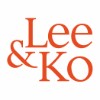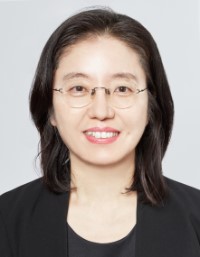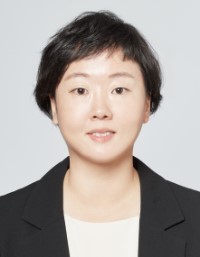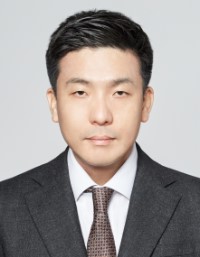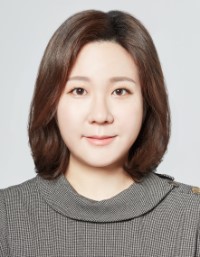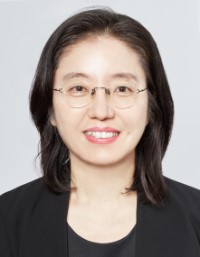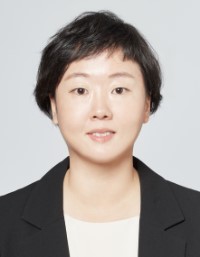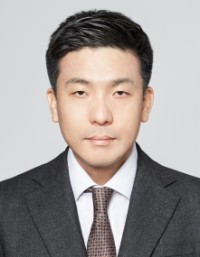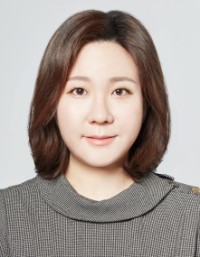Life Sciences 2025
South Korea
1. Life Sciences Regulatory Framework
1.1 Legislation and Regulation for Pharmaceuticals and Medical Devices
The primary legislation governing pharmaceuticals in Korea is the Pharmaceutical Affairs Act (PAA). The Act on the Safety of and Support for Advanced Regenerative Medicine and Advanced Biological Products (AABP) regulates cutting-edge biopharmaceutical products such as cell therapy, gene therapy, and tissue engineered products. The Medical Devices Act and the In-Vitro Medical Devices Act (collectively, MDA) regulate medical devices. All Acts, together with related presidential decrees, regulations and guidelines, are promulgated by the Office of the Prime Minister and the Ministry of Food and Drug Safety (MFDS).
On a related note, the Digital Medical Product Act was newly enacted on 23 January 2024. It aims to define and regulate digital medical products, including digital medical devices, digital integrated drugs, and digital medical/healthcare support devices. Such products were previously governed by the existing PAA, Medical Device Act, In Vitro Diagnostic Medical Devices Act, their subordinate regulations, and MFDS guidelines. The Digital Medical Product Act will now have precedence over those regulations. It will first be effective for digital medical devices and digital integrated drugs on 24 January 2025, and sequentially for digital medical/healthcare support devices on 24 January 2026.
The Ministry of Health and Welfare (MHW) and the MFDS (which is overseen by the MHW) are the main regulatory bodies in relation to pharmaceuticals and medical devices, and they are responsible for issuing and enforcing most of the regulations, guidelines and administrative orders for pharmaceuticals and medical devices. Local governments (such as the Seoul Metropolitan government) also monitor pharmaceutical and medical device entities within their jurisdiction.
1.2 Challenging Decisions of Regulatory Bodies That Enforce Pharmaceuticals and Medical Devices Regulation
Administrative orders issued by the MFDS, MHW or local governments to entities in violation of the PAA, AABP or MDA may be challenged via an administrative appeal to the competent administrative appeals commission under the Administrative Appeals Act, or via administrative litigation to the competent court under the Administrative Litigation Act. In most cases, either action will request that the competent commission or court revoke or declare null the administrative order. Rulings rendered by an administrative appeals commission may also be appealed to the competent court.
In general, these challenge procedures are applicable to other regulated products, such as food products.
1.3 Different Categories of Pharmaceuticals and Medical Devices
Pharmaceuticals are categorised into over-the-counter (OTC) drugs and prescription drugs. In principle, all pharmaceuticals must be delivered to patients by licensed pharmacists at pharmacies, except in some cases such as administration of pharmaceuticals to patients by doctors within medical institutions. While prescription drugs require a prescription from physicians, OTC drugs can be supplied to consumers without a prescription. Additionally, the MHW has designated certain OTC drugs as emergency drugs to treat light symptoms in urgent situations at patients’ discretion, and such OTC drugs may be sold at 24-hour convenience stores by non-pharmacists after such stores’ registration with the local government.
Medical devices are classified into Classes I to IV, based on their intended use and the risk level associated with the device. Class I devices present the lowest risk, while Class IV devices are considered the highest risk and are subject to the greatest scrutiny.
The Digital Medical Product Act, implemented for digital medical devices and digital integrated drugs as of 24 January 2025, and for digital medical/healthcare support devices, to be implemented as of 24 January 2026, separates digital medical products into the categories of digital medical devices, digital integrated drugs, and digital medical/healthcare support devices. This allows the MFDS to classify digital medical products into different tiers depending on their purpose, function, and potential risk, among other factors.
2. Clinical Trials
2.1 Regulation of Clinical Trials
The PAA, the MDA, the Bioethics and Safety Act (BSA) and relevant regulations govern clinical trials of medicinal products and medical devices, and the MFDS oversees approval for clinical trials.
2.2 Procedure for Securing Authorisation to Undertake a Clinical Trial
To conduct a clinical trial, the relevant clinical trial protocol must be reviewed and approved by an institutional review board (IRB) of the MFDS. The materials required to be submitted by the applicant for clinical trial approval include the following:
- for medicinal products, the clinical trial protocol, development plan, investigator’s brochure, material on manufacturing and quality of the investigational drug, preclinical trial data, materials on medical institution conducting the clinical trial, institute analysing the clinical trial sample, and the investigator and Contract Research Organisation (CRO), policies and forms regarding the clinical trial subjects, etc; and
- for medical devices, the clinical trial protocol, materials proving that the clinical trial medical device is being manufactured in accordance with the facility, manufacturing and quality management system standards, purpose of use, working principle and technical documents to verify performance and safety.
Once approved, clinical trials must be conducted in accordance with the protocol and standards regarding good clinical practice for medicinal products and medical devices, as applicable.
2.3 Public Availability of the Conduct of a Clinical Trial
All clinical trials are registered with the MFDS. Basic information regarding clinical trials such as sponsor information, information on the clinical trial including its title, purpose and use, information of drug used, plan for clinical trial, method to arrange the participants subject to experimental group or control group, the status of the clinical trial (eg, on-going, completed), method to administer and evaluate the clinical test (eg, primary and secondary end point), and subject inclusion and exclusion criteria can be searched at the medicinal products comprehensive information system, which is a website of the MFDS.
2.4 Restriction on Using Online Tools to Support Clinical Trials
No restriction exists on using online tools to support clinical trials. However, it is generally required that clinical trials are to be conducted by doctors or hospitals with in-person interviews, and written informed consents from clinical trial subjects. Recruitment of clinical trial subjects can be conducted online.
When a crisis alert level of serious magnitude or higher is declared, and if deemed necessary to protect patients, medical personnel, and medical institutions from the risk of infection, the protocols allowing provisional “untact” medical care (a term coined by a research team in Korea for non-face-to-face contact) under Article 49–3 of the Infectious Disease Control and Prevention Act may be implemented. This may apply to clinical trials, where the treatment for and monitoring of patients during clinical tests may be converted to untact treatment and monitoring.
2.5 Use of Data Resulting From Clinical Trials
The data from clinical trials is considered as personal and sensitive data and the institutions conducting clinical trials are subject to the Personal Information Protection Act (PIPA) for the collection, use, provision, etc, of such personal and sensitive information. In addition, information with respect to the participant’s identity or sponsor’s intellectual property, etc, shall not be disclosed to third parties unless there is explicit permission granted to access that information. Further, in order to protect the clinical trial subjects’ identity, unique identity numbers need to be assigned to subjects instead of their name.
When obtaining consent on the clinical trial from its subjects, the medical institution conducting the clinical trial must explain that the records of subjects’ personal information will be kept confidential, stipulate the same in writing, and make it clear that such personal information shall be maintained confidential even if results of the clinical trial become publicly available. It further needs to inform that the records relating to clinical trial including the subjects’ medical record can be accessed by the sponsor’s monitoring agent or inspector through an institutional review board (IRB) of the medical institution, and that the MFDS may also access and review such information and relevant materials.
2.6 Databases Containing Personal or Sensitive Data
In addition to the requirements described in 2.5 Use of Data Resulting From Clinical Trials, according to clinical trial management standards, such database needs to have a security system which prevents unauthorised persons from accessing the information, and matters as prescribed by the chief of MFDS for proper management of electronic records must be complied with. The sponsor also has to use identifier code for clinical trial subjects.
3. Marketing Authorisations for Pharmaceuticals or Medical Devices
3.1 Product Classification: Pharmaceuticals or Medical Devices
Under Article 2 of the PAA, “drugs” are defined as those other than quasi-drugs, among the articles listed in the Korean Pharmacopoeia, or articles, other than appliances, machinery or equipment, used for the purposes of diagnosis, treatment, alleviation, care or prevention of diseases of human beings or animals, or used for the purpose of exerting pharmacological effects upon the structure or functions of humans or animals.
A “medical device” is defined under the MDA as an instrument, machine, apparatus, material, software or any other similar product specified in the following:
- a product used for the purpose of diagnosing, curing, alleviating, treating or preventing a disease;
- a product used for the purpose of diagnosing, curing, alleviating or correcting an injury or impairment;
- a product used for the purpose of testing, replacing or transforming a structure or function; and/or
- a product used for the control of conception.
With regard to medical devices, sometimes it is difficult to distinguish medical devices from personal healthcare products (which do not require medical device approval) even when considering the purpose of use and the risk to the human body. In such case, guidance or administrative interpretation from the MFDS may be requested.
3.2 Granting a Marketing Authorisation for Biologic Medicinal Products
To market biological drugs in Korea, the initial marketer is required to obtain marketing approval the same as that for chemical drugs. Key factors to consider when reviewing an application for market approval are:
- data on origin or discovery and development process;
- data on structure and physicochemical properties;
- data on stability;
- toxicological data;
- data on pharmacological mechanism;
- data on clinical trial results; and
- data on domestic and overseas usage and approval status.
For some biologics such as the botulinum toxin, additional strict requirements on use, transfer, etc, apply. Meanwhile, unlike generic drugs, a bioequivalence test does not replace data on stability and efficacy in order to obtain market approval for biosimilars.
On the other hand, cell therapy products (medicine manufactured by physical, chemical, or biological manipulation, such as cultivation, proliferation, or screening of living cells of humans or animals in vitro), gene therapy products (medicine containing genetic material or drug-containing cells into which genetic material has been modified or introduced), tissue-engineered products (medicine manufactured by applying engineering technology to living cells or tissues of humans or animals for the purpose of regenerating, restoring or replacing tissues), advanced bio-convergence products (cell therapy products, gene therapy products, tissue engineered products, and medicinal products formed through physical and chemical combination (including fusion, complex, combination) with medical devices under the MDA) are regulated by AABP, and marketing authorisation must be obtained accordingly. (For those not regulated by AABP, PAA applies.)
3.3 Period of Validity for Marketing Authorisation for Pharmaceuticals or Medical Devices
Under the PAA, marketing authorisation for pharmaceuticals is valid for five years, and renewal is required after five years. For renewal, safety data, domestic manufacturing/import data, and a GMP compliance certificate must be submitted to the MFDS at least six months before the expiration date. If the marketing authorisation holder does not file the application for renewal or fails to meet the requirements, the marketing authorisation is cancelled.
In the case of medical devices, no renewal system existed previously, but since 8 October 2020, marketing authorisation for medical devices is to be valid for five years from the marketing authorisation date. Similar to pharmaceuticals, for medical devices, data proving that safety and efficacy has continued to be the same since the initial issuance of the marketing authorisation, and data on production/import performance, etc, must be submitted for renewal at least 180 days before the expiration date.
3.4 Procedure for Obtaining a Marketing Authorisation for Pharmaceuticals and Medical Devices
Data proving safety and efficacy, such as clinical trial results, must be submitted to the MFDS for obtaining marketing authorisation. In some cases, such as generic drugs or incrementally modified drugs, however, safety and efficacy data can be replaced with bioequivalence test result data.
The procedure for assessing marketing authorisation on medical devices varies depending on the risk they pose to human bodies. In the case of high-risk medical devices (Class III/IV), a higher level of scrutiny will apply, such as requesting and reviewing more data, including clinical data proving the efficacy and safety, compared to low-risk medical devices (Class I/II) where various data such as clinical trial data is exempted.
In the event that the indications for drugs or medical devices are changed after marketing authorisation, it is possible to file an approval for change, and the procedure is similar to the procedure for new marketing authorisations.
It is also possible to transfer a market approval from one market approval holder to another.
3.5 Access to Pharmaceuticals and Medical Devices Without Marketing Authorisations
In Korea, even if no marketing authorisation has been obtained, investigational drugs can, after relevant clinical trials are implemented and approved, be used as part of a compassionate use programme. The compassionate use programme is permitted only in the following cases:
- when treating patients with life-threatening conditions such as an end-stage cancer or acquired immunodeficiency syndrome (AIDS);
- when treating emergency patients, such as those in a critical condition or for whom there are no alternative treatment options; and
- when attempting to use investigational drugs for research or analysis (referring to research or analysis not involving human subjects).
In addition, certain orphan drugs and drugs for the treatment of rare diseases that are directly imported and distributed by the Korea Orphan & Essential Drug Center (KOEDC), as well as drugs that the MFDS admits for urgent introduction for the treatment of patients, are exempted from the requirement for obtaining marketing authorisation.
3.6 Marketing Authorisations for Pharmaceuticals and Medical Devices: Ongoing Obligations
Effective as of 21 February 2025, the existing re-examination system for pharmaceuticals will be abolished, and the safety management system for pharmaceuticals will be integrated into a comprehensive Risk Management Plan (RMP) system.
According to the PAA, those who wish to apply for market approval (or notification, as applicable) for new drugs, orphan drugs, advanced biopharmaceuticals, already approved drugs, or prescription drugs with a different type or combination ratio of active ingredients, must establish and submit a comprehensive drug safety management plan, known as the Risk Management Plan (RMP), which includes items for which information on safety and efficacy needs to be collected, or other types of risk mitigation methods as applicable. Those who have received market approval must conduct risk management according to the RMP and regularly submit the relevant results to the MFDS.
The MDA stipulates that the head of the MFDS may conduct safety and efficacy investigations for at least four years and no more than seven years on newly developed medical devices, orphan medical devices, and medical devices equivalent to newly developed medical devices.
Approved pharmaceuticals or medical devices may be subject to re-evaluation if the MFDS finds it necessary to re-evaluate the safety and efficacy of the product. To re-evaluate, the MFDS reviews not only documents and materials submitted before the marketing authorisation, but other post-approval information, including side-effect data since launch, status in other countries and amendments to the marketing authorisation made in relation to safety and efficacy.
3.7 Third-Party Access to Pending Applications for Marketing Authorisations for Pharmaceuticals and Medical Devices
Under the PAA and MDA, if the applicant files a request in writing to protect information or data contained in the application for marketing authorisation against disclosure, such information or data should not be disclosed unless otherwise required by the public interest. The PAA and MDA even impose criminal penalties for breaching the non-disclosure obligation above.
Further, the Korean Criminal Act (KCA) punishes a public official or former public official who divulges secrets obtained in the course of performing their official duties.
While the contents of the application are not disclosed, third parties may infer from the following circumstances that certain marketing authorisations may be granted shortly:
- clinical trial approval status for drugs is published on the MFDS website; in particular, it can be inferred that generic drugs are scheduled to be released from the clinical trial approval status, since the submission of bioequivalence test results is required for approval of generic drugs; and
- the MFDS notices the DMF registration of APIs on its website.
4. Regulatory Reliance and Fast Track Registration Routes
4.1 Fast Track Registration Routes
The expedited (priority) review of pharmaceuticals is primarily governed by the PAA, the Act on the Safety and Support for Advanced Regenerative Medicine and Advanced Biopharmaceuticals, and the Special Act on the Promotion of Development and Emergency Supply of Medical Products for Public Health Crisis Response.
Under the PAA, the MFDS can designate a drug for priority review based on the applicant’s request if it falls into one of the following categories: (i) a drug used for treating serious or rare diseases with no alternative available, or one expected to significantly improve safety and efficacy compared to existing alternatives; and (ii) a new drug developed by an innovative pharmaceutical company designated as such by the MHW. Such designated drugs must be reviewed within 90 days, barring exceptional circumstances.
According to the Act on the Safety and Support for Advanced Regenerative Medicine and Advanced Biopharmaceuticals, drugs can be designated for expedited processing upon the request of the developer if any of the following conditions is met: (i) for the treatment of life-threatening diseases like cancer with no alternatives; (ii) for the treatment of rare diseases as defined by the Rare Diseases Management Act; or (iii) for the prevention or treatment of bioterrorism-related or other pandemic infectious diseases. These expedited drugs will be prioritised over other non-designated product approvals.
The Special Act on the Promotion of Development and Emergency Supply of Medical Products for Public Health Crisis Response mandates that preliminary crisis-response medical products, designated by the head of MFDS for preventing or treating infectious diseases posing a serious threat to public health, should be reviewed within 40 days barring exceptional circumstances.
For medical devices, an expedited review system exists for orphan medical devices, innovative medical devices, and those under the integrated review of approval and new medical technology assessment. The MDA stipulates that orphan medical devices, designated by the head of MFDS for their special utility value for rare diseases, can be reviewed and approved expeditiously. The Medical Device Industry Enhancement and Innovative Medical Device Support Act allows for advanced technological devices, significantly improving upon existing devices or treatments, to also receive expedited review. Regulations for the Integrated Operation of Medical Device Approvals and Assessments aim to shorten the market entry period by concurrently reviewing device approval, insurance benefit eligibility, and new medical technology assessments.
4.2 Regulatory Reliance
South Korea does not have a system in place for the expedited approval of pharmaceuticals that have been approved in other countries. However, there are regulations that allow for the submission of clinical trial data conducted abroad when applying for market approval (or notification, as applicable) of pharmaceuticals.
According to the PAA, foreign clinical trial data can be submitted in place of safety and efficacy data for Koreans during the domestic approval process. However, due to ethnic differences, it is challenging to only use foreign clinical data. Therefore, the law requires that simplified clinical trial data obtained from studies conducted specifically on Koreans be submitted together with the foreign clinical data.
Regarding medical devices, the MDA stipulates that clinical trial data related to the safety and efficacy of the medical devices must be submitted during the approval process. Submission of foreign data generated by institutions recognised for their reliability and determined to have been generated in accordance with medical device clinical trial management standards is allowed. While submission of bridging data is not explicitly mandatory for medical devices, the MFDS may request additional data from domestic trials if it is deemed difficult to directly apply foreign clinical trial data.
5. Manufacturing of Pharmaceuticals and Medical Devices
5.1 Requirement for Authorisation for Manufacturing Plants of Pharmaceuticals and Medical Devices
A manufacturing plant of pharmaceutical products is subject to an authorisation for manufacturing pharmaceuticals under the PAA, and a manufacturing plant of medical devices needs an authorisation for manufacturing medical devices under the MDA. The MFDS grants such authorisation. When a person, who intends to manufacture pharmaceuticals or medical devices, prepares and files the application for manufacturing authorisation and necessary documents with the local district of MFDS to which the manufacturer belongs, such local district MFDS reviews whether the applicant for manufacturing approval (in the case of a company, the representative) is qualified, whether all necessary documents are satisfied, and assesses whether the applicant has necessary facilities and labour force, and if appropriate, it grants authorisation. Once authorisation is granted, it will be valid without any other special renewal procedure unless grounds for revocation occur under the PAA or the MDA.
Of note, separate from MFDS’s authority under PAA/MDA with regard to requirements for facilities and labour force, other licences/authorisations will be required for plant construction (such as those related to environment and safety).
6. Distribution of Pharmaceuticals and Medical Devices
6.1 Wholesale of Pharmaceuticals and Medical Devices
Wholesale of pharmaceuticals is subject to authorisation from the head of Si/Gun/Gu (ie, the local government) in Korea. To obtain such authorisation, the applicant should meet qualifications and have a business place, warehouse and other facilities as prescribed by Presidential Decree of the PAA. The authorised wholesaler is in principle required to employ a pharmacist to manage the relevant tasks. Such authorised wholesaler can sell or acquire pharmaceuticals for sales purposes which comply with the standards for quality management of pharmaceuticals in distribution. There is no validity period for the authorisation of wholesale of pharmaceuticals.
For the wholesale of medical devices, the wholesaler should file a notification of distribution with the competent Special Self-Governing Mayor, Special Self-Governing Province Governor, or the head of a Si/Gun/Gu. Once such notification of distribution is accepted, the person can distribute medical devices and there is no period of validity for wholesale notification.
6.2 Different Classifications Applicable to Pharmaceuticals
Pharmaceuticals are classified into OTC drugs and prescription drugs under the PAA.
OTC drugs refer to any of the following drugs, which meet the standards determined and publicly notified by the Minister of Food and Drug Safety, following consultations with the Minister of Health and Welfare:
- a drug, the misuse or abuse of which is of little concern, and whose safety and efficacy can be expected even when used without a prescription by a physician;
- a drug that may be used to treat a disease without a physician’s or dentist’s professional knowledge; and/or
- a drug which has a relatively small side effect on human bodies in light of their dosage form and pharmacological action.
Emergency drugs among the OTC drugs are used mainly for minor symptoms at the sole discretion of patients, and are publicly notified and prescribed by the Minister of Health and Welfare. Such emergency drugs can be purchased at places other than pharmacies. Conversely, prescription drugs mean drugs which are not OTC drugs and require a physician’s prescription.
Meanwhile, orphan drugs mean either drugs used for the purposes of diagnosis or treatment of rare diseases under the Rare Disease Management Act or drugs with rare subject of application, whose alternative drug does not exist or whose safety or efficacy has been significantly improved compared to its alternative drug, which are designated by the Minister of Food and Drug Safety.
Other than the above, drugs essential for health and medical treatment, whose stable supply is difficult based only on market function, are designated and managed as national essential drugs.
7. Import and Export of Pharmaceuticals and Medical Devices
7.1 Governing Law for the Import and Export of Pharmaceuticals and Medical Devices and Relevant Enforcement Bodies
The PAA and MDA are the primary laws governing the import and export of pharmaceuticals and medical devices, while the Customs Act and Integrated Public Announcement promulgated by the Ministry of Trade, Industry and Energy (MOTIE) pursuant to the Foreign Trade Act, apply the requirements of the PAA and MDA to the actual customs process.
In principle, pharmaceuticals and medical devices manufactured abroad are subject to the same regulations as those manufactured domestically. The importers of such products are responsible for obtaining the necessary licences from the MFDS, such as import business licences and marketing authorisation for particular products, and complying with all obligations under the PAA or MDA, such as quality testing. In addition to the above, importers also need to register overseas manufacturing facilities and undergo inspections of those facilities.
A manufacturing business licence and manufacturing authorisations for particular products are required for the manufacture of pharmaceuticals or medical devices, whether for domestic use or export. However, manufacturing authorisations for pharmaceuticals or medical devices that are only exported, and not sold or distributed domestically, are exempted from certain requirements and do not require renewal.
The MFDS regulates licences and authorisations for both pharmaceuticals and medical devices, while the Korean Customs Service enforces the relevant regulations at the point of entry for imports.
7.2 Importer of Record of Pharmaceuticals and Medical Devices
Only those with an import business licence from the MFDS for pharmaceuticals or medical devices can act as their importer of record.
In order to receive an import business licence for either pharmaceuticals or medical devices, the entity applying for the licence must fulfil certain requirements, such as having the required storage facilities, quality testing facilities and equipment, and personnel such as import managers and safety managers. Additionally, local presence is required in order to hold an import business licence for pharmaceuticals and medical devices.
7.3 Prior Authorisations for the Import of Pharmaceuticals and Medical Devices
In principle, only entities with an import business licence and marketing authorisation for the particular imported product can import pharmaceuticals or medical devices into Korea.
Exceptions of varying degrees to this rule include imports for the treatment of rare diseases, emergency use, clinical trials, research and testing, and personal use.
7.4 Non-Tariff Regulations and Restrictions Imposed Upon Imports
The Customs Act requires those who import products required by law to have approval, licence, labelling or fulfil other requirements for their importation to show proof of the fulfilment of such conditions to the head of the competent customs office, which for pharmaceuticals and medical devices are the requirements imposed by either the PAA (for pharmaceuticals) or the MDA (for medical devices), see 7.1 Governing Law for the Import and Export of Pharmaceuticals and Medical Devices and Relevant Enforcement Bodies to 7.3 Prior Authorisations for the Import of Pharmaceuticals and Medical Devices.
Whether the imported product is subject to the regulations and requirements of either the PAA or MDA would be determined by whether the product satisfies the criteria for pharmaceuticals or medical devices as defined in the respective acts.
7.5 Trade Blocs and Free Trade Agreements
As of February 2025, Korea has entered into 22 economic partnership agreements and free trade agreements with other countries, all 22 of which (the RCEP and FTAs with Chile, Singapore, EFTA, ASEAN, India, the European Union, Peru, the United States, Türkiye, Australia, Canada, China, New Zealand, Vietnam, Colombia, MERCOSUR, the United Kingdom, RCEP, Israel, Cambodia, Indonesia and Philippines) are in force.
8. Pharmaceutical and Medical Device Pricing and Reimbursement
8.1 Price Control for Pharmaceuticals and Medical Devices
The government’s price control for pharmaceuticals is based on the relevant laws such as the National Health Insurance Act (NHIA), the Rules on the Standards of National Health Insurance Medical Benefits, and the Standards for Decision or Adjustment on Drugs. Also, the government’s price control for medical devices is in accordance with NHIA, the Rules on the Standards of National Health Insurance Medical Benefits, and the Standards for Decision or Adjustment on Activity and Medical Materials for Treatment, etc. The MOHW, the Health Insurance Review and Assessment Service (HIRA) and national healthcare insurance system (NHIS) control the price of pharmaceuticals and medical devices.
Prices for the majority of medical services provided and pharmaceuticals sold in Korea are reimbursed by the Korean NHIS, and most legal residents of Korea are insured by NHIS. NHIS classifies the items subject to reimbursement into the following categories: pharmaceutical products, therapeutic procedures, and treatment materials. Here, treatment materials refer to consumable medical devices used in therapeutic procedures.
If a medical service or a pharmaceutical product is covered by NHIS, a patient cannot be charged more than the co-payment amount corresponding to the maximum reimbursement price published by the MOHW. If a medical service or pharmaceutical is not covered by NHIS, the healthcare provider is free to determine the price of such product or service.
For pharmaceuticals and medical services to be reimbursed, the HIRA and the MOHW determine whether to reimburse the costs for medical services or pharmaceuticals after evaluating clinical efficacy, cost-effectiveness, and other factors.
Regarding medical devices covered by the NHIS, the device may be subject to its own maximum reimbursement price, or the cost of the medical device may be included in the maximum reimbursement price for the relevant medical service that utilises such a device.
8.2 Price Levels of Pharmaceuticals or Medical Devices
For drugs, foreign prices may be referenced in the negotiation of the drug’s maximum reimbursement price. In general, the economic evaluation for pharmaceuticals takes precedence over such external price referencing in determining the price of drugs. Foreign prices have direct effect only when deciding the price of drugs whose economic evaluation can be exempted under relevant pricing regulations.
Meanwhile, in the case of pricing of medical devices (ie, pricing of the device or the medical service that utilises such a device), foreign prices are not referenced but the import price or the price of listed products with similar function are considered.
8.3 Pharmaceuticals and Medical Devices: Reimbursement From Public Funds
A substantial part of the costs of pharmaceuticals and medical services (using medical devices) is covered by the national health insurance scheme. However, even when covered by the national health insurance scheme, the full amount is not paid by the health insurance, as the patient is responsible for the applicable co-pay amount.
Rules on the Standards of National Health Insurance Medical Benefits, and the Standards for Decision or Adjustment on Drugs define the items not subject to reimbursement. Such items include procedures, drugs, or treatment materials that are performed or used in cases where there is no hindrance to work or daily life, are not intended to improve essential bodily functions, or are preventative treatments not directly aimed at treating diseases or injuries.
There is a difference in the way pharmaceuticals and medical services are covered by health insurance. In the case of pharmaceuticals, products not listed on the reimbursement list are not covered by health insurance (positive-listing system). When a manufacturer or importer submits a request for reimbursement for a pharmaceutical product that has obtained marketing authorisation (MA), the product undergoes an evaluation of reimbursement appropriateness by HIRA. Subsequently, negotiations with the NHIS determine the maximum reimbursement amount. This process establishes the product’s eligibility for health insurance coverage, the criteria for such eligibility, and the maximum reimbursement amount. Finally, the MOHW includes the product on the reimbursement list. However, in the case of medical services, the MOHW stipulates medical services not covered by health insurance (negative-listing system).
8.4 Cost-Benefit Analyses for Pharmaceuticals and Medical Devices
Where drugs are concerned, it is the principle of the positive listing system to determine the eligibility for reimbursement and reimbursement amount on the basis of HTA (health technology assessment – ie, cost-utility analysis). In the case of pharmaceuticals for treatment of cancer or orphan diseases, however, economic evaluation may be omitted if certain criteria are met.
Meanwhile, for medical devices, the cost-effective analysis would play a minor role only to a limited extent in determining the eligibility for reimbursement and reimbursement amount.
8.5 Regulation of Prescriptions and Dispensing by Pharmacies
After the separation of prescribing and dispensing in 2000, only physicians can prescribe drugs in hospitals, and only pharmacists can dispense drugs in pharmacies (this applies to the case of outpatient only, and dispensing drugs in pharmacies within the hospital is possible for inpatients). In order to prevent the over-prescription of narcotic or psychotropic drugs such as propofol, monitoring of prescription details is performed through HIRA’s big data management system.
Lee & Ko
Hanjin Building
63 Namdaemun-ro
Jung-gu Seoul
04532
South Korea
+82 2 772 3036
+82 2 772 4001/2
keumnang.park@leeko.com www.leeko.com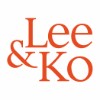
Trends and Developments
Introduction
Patentees holding patent rights relating to pharmaceutical products often aim to extend their market exclusivity by obtaining Patent Term Extension (PTE) of patents covering their products. Conversely, generic companies seeking prompt market entry have a vested interest in opposing PTE.
Given these dynamics, the key points of dispute between patentees and generic companies are: (i) which patents are eligible for PTE (“PTE eligibility”); (ii) how long the term should be extended under PTE (“PTE period”); and (iii) what scope of rights should be granted during the extended patent term (“PTE scope”).
The Korean government has been attempting a statutory harmonisation with global standards while balancing innovation-fostering patent protection rights with the public interest served by lower-priced generic products. The PTE system, which emerged from these policy considerations, represents one of the most dynamic and constantly evolving areas of Korea’s patent policy.
For example, the Korean National Assembly recently passed a bill proposing to introduce additional requirements for PTE eligibility and the PTE period, and the Korean Intellectual Property Office (KIPO) is currently reviewing changes to the appellate system for rejected PTE requests.
This article examines the current status of Korea’s PTE system and the latest trends that patentees should keep in mind for a global IP strategic framework.
Overall Status of the Korean PTE System
Similar to policies in other areas of IP, patent offices worldwide are seeking to harmonise their PTE systems.
In Korea, KIPO introduced the so-called new substance-first approval requirement in 2013 as for PTE eligibility. This 2013 requirement is comparable to the notion of “first commercialisation” in the United States PTE policy and the European SPC systems. Under the amended Korean Patent Act (KPA) that will come into effect later this year, patentees should choose a single patent among multiple patents covering the approved pharmaceutical product, which is similar to the approach used in the United States PTE system.
Despite these amendments, however, there are still significant differences between the Korean PTE system and those of the United States and Europe with regard to the PTE period and the scope of the extended rights.
As for PTE period, in the leading Betmiga® case, the Korean Supreme Court ruled that the length of the PTE period under Article 89 of the KPA is “the time period during which the patented invention could not be practiced”. The Korean Supreme Court further defined the PTE period as the time period from the initiation of a marketing approval (MA) process (usually, the start date of clinical trials) or the patent registration date, whichever is later, to the MA date. This PTE period interpretation is akin to the definition under the Japanese PTE system. Despite this technical definitional similarity, however, the average length of PTE periods granted in Korea is much shorter than those in other jurisdictions, including Japan, because the KIPO takes a restrictive approach in calculating the PTE period. For PTE calculation purposes, only the periods during which clinical trial organisations and the Ministry of Food and Drug Safety were conducting related activities count toward the PTE period. In practice, the statutory PTE period – defined as “the time period during which the patented invention could not be practiced” – will be determined according to the Public Notification on the Administration of the Patent Term Extension (the “Public Notification”) from KIPO rather than the Supreme Court’s interpretation of the statute.
As for PTE scope, in the leading Vesicare® case, the Korean Supreme Court held that the scope of rights should be determined by focusing on the sameness of the active ingredient, the medicinal use, and therapeutic effects. Based on these standards, the court found that the PTE scope of a compound patent covers different salt forms of the approved product. This ruling on the enforceable scope regarding API is similar to the enforceable scope of patent right by PTE/SPC in the United States and Europe. The Korean system differs significantly from its United States and European counterparts, however, in that the majority view takes the position that the PTE right should be limited to the first approved use (indications) as well as the approved API. That is, in the United States and Europe, any medicinal uses approved for the product at issue without any limitations thereon can be protected by the patent extended by PTE/SPC.
Recent Trends of Korea’s PTE System
PTE eligibility
First, according to the amended KPA, the single-patent selection requirement, whereby only one patent among multiple patents covering an approved product may receive PTE, will be implemented in the second half of 2025. According to the new statute, applicants (patentees) should select only one patent to benefit from PTE among the patents that are eligible for PTE since the related marketing approval is granted after the implementation of the amended KPA. Accordingly, patentees should carefully determine which patents should be extended.
Second, regarding PTE eligibility, a recent Supreme Court decision in the Plegridy® case (wherein the API of the approved drug product at issue is a pegylated drug) highlights another key issue. The Supreme Court ruled that a pegylated drug may not be eligible for PTE as long as the active moiety is found to be the same (having the same medicinal use/effect despite different PK profiles, such as long retention time of drug in blood due to pegylation) as the earlier approved drug (a non-pegylated form).
Although the “new substance-first approval” requirement is similar to the “first commercialisation” requirement in the United States and Europe, the Korean Supreme Court ruling in the Plegridy® case suggests that the PTE eligibility for pegylated drugs will be different from the United States and Europe where a pegylated product is generally considered a new active substance.
Under this Korean Supreme Court interpretation, the KIPO is expected to reject PTE applications based on pegylated forms of biologics. In fact, we are already seeing cases in Korea where the KIPO has rejected PTE applications under the Korean Supreme Court’s reasoning.
Therefore, patentees who own patents directed to pegylated pharmaceutical products need to show different medicinal uses/effects of their pegylated drugs from the earlier approved unmodified forms if they aim to secure PTE of their patents.
Although the above Supreme Court ruling implies that a pegylated drug is not eligible for PTE, pegylation may result in a clearly different medicinal use/effect in some cases. In these specific cases, patentees may still argue for new active substance status even in the face of the Korean Supreme Court ruling. The Korean Supreme Court’s decision was grounded on the foundation that the pegylated drug in question merely offered a different pharmacokinetic profile while maintaining the same medicinal use.
PTE period
The KIPO’s calculation of the PTE period based on its Public Notification rules and regulations is notably restrictive and results in much shorter PTE periods compared to other jurisdictions.
It is important to note, however, that it has not always been calculated that way. Earlier KIPO public notifications allowed for a wider range of PTE periods, and, through a string of amendments to its public notifications, the KIPO has established a practice of increasingly limiting PTE periods.
Currently, in the Galvus® PTE case, the disputed issues are closely related to the KIPO’s amendment to the calculation method of the PTE period. In that case, the PTE of the patent at issue was granted under the KIPO’s public notification, issued in 2000 (“KIPorO’s Former Public Notification”), and the granted PTE period is being hotly contested.
Since the PTE period under the KIPO’s Former Public Notification was substantially the same as that of the Japanese PTE system, the granted PTE period was longer than the period allowable under the current Public Notification. This PTE disparity was what prompted some generic companies to challenge the validity of the PTE of the Galvus® patent.
After more than eight years of twists and turns, the case is now pending before the Korean Supreme Court. Since the IP High Court found all periods granted for PTE to be valid, if the Supreme Court upholds this appellate decision, the KIPO’s practice on PTE period calculation and the relevant provisions of the Public Notification may be amended going forward to expand the allowable time periods for PTE purposes.
Such a move will be welcome news for global patent owners with Korean patent interests.
On a separate but related issue regarding Korea’s PTE period, according to the amended Patent Act, from the second half of 2025, Korea, like the United States, will be subject to a 14-year cap if the term of the extended patent exceeds 14 years from the date of approval of the drug product. The requirement for patentees to select only one patent to file a PTE application will be implemented in conjunction with this 14-year cap.
If the expected PTE term of each patent is the same as each other and is not limited by the 14-year cap, a longer exclusivity may be expected by the PTE of a later patent. In general practice, formulation or crystalline-form patents have a later term expiry date. Like many other jurisdictions around the world, the substance/compound patent is generally the strongest in terms of validity of rights.
Thus, in connection with the above two requirements, which will be newly implemented from the second half of 2025, pharmaceutical patent holders in Korea should comprehensively consider various factors from the perspective of pharmaceutical patent protection, including the degree of strength of each patent right that can be extended and the length of the possible extension period, when pursuing a PTE application.
PTE Scope (enforceable scope of patent right during extended patent term)
The scope of rights during the extended patent term by PTE is stipulated by Article 95 of the KPA. It provides that the PTE scope is limited to only practising the approved product for its approved medicinal uses.
In this regard, the Korean Supreme Court clarified in the Vesicare® case that the PTE scope should be determined by focusing on the active ingredient, its medicinal use and therapeutic effect of the approved product. The Korean Supreme Court then found that any salt-modified forms can be covered by the compound patent extended based on the MA of the approved product at issue and where the API is a different salt.
Although the Supreme Court provided some clarity about how to assess the sameness of the active ingredients, uncertainties remain regarding how to interpret “the approved use”. These uncertainties are currently stirring controversy in Korea.
The following key points are worth pondering regarding “the approved use”: (i) whether the use should be the first approved uses; and (ii) whether the use means the specific approved indications or general concept of the medicinal use.
As at the time of writing, the latter is being disputed and tested in many cases, but patentees need to raise the former issue before moving to the latter one.
With respect to the former issue (referred to as “Issue 1”), although the majority view in Korea is that the PTE right should be limited by the first approved uses as well as the first approved API, the language of Article 95 of the KPA does not clearly limit the use to be that approved first for the product. The statute merely states that the scope of patent right is limited to practising the approved product for its approved uses. Historically, the PTE system was first established in the United States, and the relevant provision in 35 USC §156 (b)(1) also states that the scope of rights is limited to any approved use.
The limitation to approved medicinal uses was introduced in line with the original purpose of the PTE, which was to extend patent rights directed to a pharmaceutical product.
No matter how broad the scope of the patent, the scope of rights during the patent term extended by the PTE was limited to the approved API, and there was no rational reason to further narrow this limited scope based on the first approved medicinal use.
Accordingly, patentees may need to raise questions regarding Issue 1 and the proper interpretation and purpose of Article 95 of the KPA in terms of PTE history.
Regarding the latter issue (referred to as “Issue 2”), one common strategy taken by generic companies had been to change the API of the patented product, such as changing the salt, to claim non-infringement of the PTE scope. With the Supreme Court decision in the Betmiga® case blocking this strategy, local generics in Korea are turning to another strategy by claiming differences in approved medicinal use.
Currently, hundreds of scope confirmation action cases against a product patent extended based on the approval of the K-cab® product are pending before the IP High Court. In the first instance, the IPTAB ruled in favour of the patentee, and the IP High Court also ruled in support of IPTAB’s decision. Specifically, the IPTAB held that:
- although the specific indications asserted by the generics are different from the first-approved indications of the patented drug, all of them are based on the same pharmacological mechanism, which has been known before the patent at issue;
- the PTE scope is limited to practising the invention directed to the approved product, which does not mean practising exactly the same pharmaceutical product as the approved product; and
- the asserted indications are deemed substantially identical to the first-approved indications in terms of medicinal use and effect.
Implications of the PTE Trends in Korea for Pharmaceutical Patent Holders
In the important field of PTEs, depending on the interests at stake, there will inevitably be arguments between patentees favouring broad interpretation of rights and generic companies advocating for narrow constructions.
Due to the competing policy aspects of the PTE system, the Korean PTE system is rapidly changing and creating an environment where legal disputes are constantly arising in connection with ambiguities in Korea’s interpretation of the law.
While the direction of some previous Korean amendments may be favourable to patentees, the recent amendments to the KPA introduce more restrictive requirements for granting PTEs to patentees in Korea. However, further discussions regarding amendments to the Korean PTE system are ongoing. These evolving trends in the PTE system signify that the direction of the improvements or revisions is not set in stone and Korea remains open to hearing various views.
Therefore, pharmaceutical patent holders and the stakeholders in the pharmaceutical industry are encouraged to examine proactively whether the current and forthcoming amendments to the PTE system are moving in the right direction. In the end, a balanced IP and legal policy approach in Korea should be in line with the purpose and intent of the PTE system.
Lee & Ko
Hanjin Building
63 Namdaemun-ro
Jung-gu Seoul
04532
South Korea
+82 2 772 3036
+82 2 772 4001/2
keumnang.park@leeko.com www.leeko.com